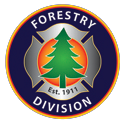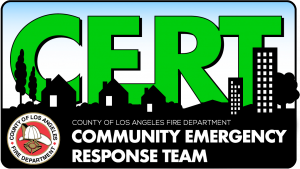
Live Fuel Moisture Summary
The County of Los Angeles Fire Department created the Vegetation Management Program in 1979 to develop strategies for responding to the growing fire hazard problem. These include:
- An ongoing effort to analyze the history and effects of wildland fires in Los Angeles County.
- Development of fuel management projects with stakeholders, including cities, community groups, and other agencies; experimentation with various methods of reducing or removing fuels in fire prone areas, as well as evaluation of environmental impacts and effects of these practices. Thousands of homes have been lost in wildland fires. Many of these were lost due to unmanaged vegetation around them. Wildland fire behavior is strongly influenced by vegetation (fuel) type, fuel moisture, the arrangement and continuity of fuels, slope, aspect, and weather.
- Vegetation can be modified and managed, but as long as people choose to live in wildland areas, the threat of major catastrophe exists. Vegetation management, related to wildland fire, refers to the total or partial removal of high fire hazard grasses, shrubs, or trees. In addition to fire hazard reduction, vegetation management has other benefits, including: increased water yields, improved habitat for wildlife, reduction of invasive exotic plant species, and open access for recreational purposes.
Los Angeles County encompasses a land area of 4,000 square miles. 47% of this area is mountainous, while the remainder consists of alluvial valleys, coastal plains, and high desert. Mountain ranges within the County run from east to west. Primary canyon drainages flow north and south. This natural topography creates airflow patterns linking the desert with the Pacific Ocean. During periods of high meteorological pressure zones over the desert, hot, dry, northerly winds known as Santa Anas follow these paths. The high frequency of fires in north/south drainages has earned them the name fire corridors. Prominent fire corridors in Los Angeles County include Malibu, Arroyo Seco, and San Gabriel Canyons.
Chaparral is the vegetative ecosystem present on most watersheds in Los Angeles County. The term applies to the shrubby vegetation seen on both coastal and inland hillsides. Chaparral can be separated into two types; soft chaparral (usually called coastal sage scrub) and the taller hard chaparral. It is dominated by evergreen and drought deciduous shrubs 1 to 15 feet tall. Most of these plants are recognized by tough, leathery leaves that reduce water loss in dry conditions. Many chaparral plants contain volatile oils which produce a strong odor and increase flammability.
Common examples include various species of Ceanothus, Manzanita, Sage, Sumac, Toyon, and Chamise. Chaparral ecosystems are very efficient at controlling erosion and protecting watersheds. Deep root systems stabilize slopes and allow plants to thrive in the dry Southern California Mediterranean climate. Chaparral plant communities depend on fire as an integral part of their life cycle, and periodic burning is essential for these communities to rejuvenate. As unburned plants grow older, the amount of dead material increases dramatically. By age 50 as much as 50% of an individual plant may be dead. Where chaparral plants cover a broad area and are uniformly old and senescent, fires tend to be large and devastating.
There are 5 methods currently being used by the County of Los Angeles Fire Department to manage over-aged chaparral stands:
Prescribed Fire
The confined application of fire to a preselected area of land in order to minimize the amount of fuel in the area. Prescribed fires are carried out only under specific weather and fuel conditions, and is used to mimic nature’s own process of regeneration.
Biological Control
The reduction of plant volume using grazing or browsing animals, such as goats, to hold growth back and maintain low fuel volume.
Mechanical Brush Removal
The use of mechanical equipment to reduce vegetation in an area. Equipment consists mainly of a bulldozer, in combination with a “brush crusher”, a brushrake, disk or anchor chain, which crushes or removes the vegetation.
Hand Clearing
The use of manual labor to remove brush with an assortment of tools including the Pulaski, hand axe, Grubbing hoe, chain saw, handsaw and others to modify vegetation arrangement. This is the most common method used by property owners to meet Fire Code requirements.
Chemical Application
The application of growth inhibitors, defoliators or killers to reduce highly flammable herbaceous or poisonous plants such as annual grasses or poison oak.
Data gathering techniques provide vegetation managers with information necessary to carry out their programs. This data can help identify project areas and predict the chaparral conditions, as well as anticipate fire behavior.
Fuel Sampling
Live fuel moisture plant samples are taken at regular intervals and weighed, then dried and weighed again, to determine the moisture content in Chaparral. It is a major determinant in how the brush will burn. These measurements, when used in conjunction with other data, can be used to assess fire hazards and predict fire behavior for use in fire control, fire prevention, and prescribed fire activities.
Weather Monitoring
Appropriate and predictable weather conditions are critical for prescribed burns. Temperature, humidity, and wind is constantly monitored in order to maintain safe operations.
Fire Planning – Geographic Information Systems
The County of Los Angeles Fire Plan Unit is responsible for implementing the California Fire Plan, a statewide framework for minimizing costs and losses from wildland fires. The Fire Plan Unit utilizes a Geographic Information System (GIS) to identify high hazard\high value areas and communities at risk in the wildland-urban interface.
Identification of fire hazard\risk areas is achieved by assessing and validating fire environment components (Fuels, Weather, Topography, and Assets at Risk) in Los Angeles County. Areas identified through the Fire Plan process as Communities at Risk (CAR) and\or “Very High Fire Hazard Severity Zones” (VHFHSZ), are targeted for focused Pre-Fire Management projects by the Department’s Vegetation Management Program.
Smoke Management
The release and tracking of weather balloons measuring wind speed and direction allows managers to predict where smoke from a prescribed fire or chemicals will drift. Treatment methods can then be carried out under conditions to keep smoke and related chemicals away from structures, roads, and developed areas. Differences in wind patterns at ground level and aloft can help predict possible changes in fire behavior.
Aerial Imagery
The use of aerial photographs and infrared imagery enables managers to recognize areas of high priority for vegetative fuel.
Natural Occurrences Affecting Chaparral
The health of chaparral communities can vary. Drought, frost and abnormally high rainfall can cause vegetation die back. Other possible dieback causes range from fungus infections to air pollution side effects. Post Burn evaluations of pre- and post-fire treatments are conducted to create and utilize best management practices for vegetation management. Vegetation condition, erosion, effects on wildlife and adverse environmental factors are a few of the subjects being studied. Close monitoring and record keeping of effects allows Fire Department managers to continually improve vegetation management techniques.
Agreements with Other Agencies Bill 1704
State of California Senate Bill No. 1704 sets forth guidelines for prescribed burning in California. This Bill grants the Los Angeles County Fire Department the authority to burn brush covered lands in order to reduce hazardous wildfire conditions. A private landowner may have up to 90% of the costs incurred for prescribed burning covered by the Vegetation Management Program if their primary objectives include the following: conversion of brush-covered areas into grazing land, fire prevention and structure protection, watershed protection and conservation, or range and forage improvement. If all of the terms of the burning permit are followed and the fire escapes, fire suppression costs will be covered under a third-party liability policy of insurance.
Coordinated Resource Management Agreement
This agreement allows the Fire Department to act as the lead in cooperation with other governmental agencies in projects concerning natural resources. On prescribed burns where several agencies share an interest, coordination plays an especially important role.







